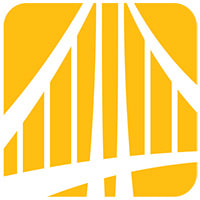The Advantages of Predictive AI and Motion Capture in Digital MSK
June 3, 2024
7 min. read

In the U.S., one in two adults report an MSK condition each year.1 On top of that, MSK disorders are expensive to treat, costing the U.S. healthcare system a grand total of over $380 billion—more than any other category of care.2 With the physical and occupational therapists needed to treat these MSK conditions spread thin, our nations expert providers are going to need help to meet this growing demand.
This will be most acutely felt in rural and underserved areas of the country, where access to care is already stretched to the limit, and patients cant reasonably be expected to drive several hours round trip to a PT appointment three times a week. According to The National Rural Health Association, the patient-to-primary care physician ratio in rural areas is only 39.8 physicians per 100,000 people, compared to 53.3 physicians per 100,000 in urban areas.3
Finding innovative digital tools will be critical to help the millions of MSK patients silently suffering in their homes without access to care today. The good news is that some of the most promising advances in digital healthcare technology are available today—motion capture and predictive analytics in healthcare.
Motion capture, commonly known as mo-cap, is the process of digitally capturing the movement of objects or people and mapping that data. When you hear the word, you're probably picturing Andy Serkis wearing a gray bodysuit covered in tracking markers to bring Gollum to life in The Lord of the Rings. But today, its applications span entertainment, military applications, sports, and even healthcare. In the healthcare setting, motion capture can be used to digitally observe movement, gait, exercise technique, and more to give therapy clinicians an extra set of data to assist assessment—thankfully, without the gray bodysuit.
How Does Motion Capture Maintain Accuracy While Combating Bias?
Medbridge's Motion Capture allows clinicians to see beyond what the naked eye can see, providing an extra data piece that is hugely valuable in terms of assessments. And while predictive AI helps, at the end of the day the motion capture assessment is not a diagnosis—it is a tool that helps a trained clinician make an informed decision. Using machine learning algorithms, these motion capture models are being trained with a diverse range of people of varying ages, body types, abilities, and even clothing variety to ensure that it's accurate and works for all people—not just a static model. This helps combat bias by creating a pool of data points that are representative of the diverse population and demographics of real life.
Is Motion Capture the Key to More Efficient MSK Assessment?
Motion capture technology can be used to evaluate MSK patient movement in detail while the body is in motion, giving providers new insight and data on the patients mobility and functional ability, adding objective measures on top of what can be observed with just the naked eye.
And now with advancements in predictive AI analytics in healthcare, this motion capture tech can be used as a powerful tool to assist clinician assessment. Motion capture can be used to increase the speed of objective measure capture that providers perform in the clinic, or on a patients mobile device to monitor home exercise programs and surface the objective measures in a remote care situation.
So where does motion capture fit in with therapy assessment? If we look at history, even the largest technological leaps still need specialist knowledge to effectively use these tools.
Take the MRI. Magnetic resonance imaging is a non-invasive medical imaging test that produces images of nearly every internal structure of the body using a large magnet and radio waves, and its hard to convey just how revolutionary this breakthrough is. But even as ubiquitous and essential as it is to modern healthcare today, it still relies on specialist knowledge and clinical judgment to interpret the information that the MRI provides. After all, your average Joe or Jane looking at an MRI scan wouldn't be able to make heads or tails of what it means.
In the same way, motion capture helps PTs and OTs effectively assess patient needs and progress—but it cant replace their expertise. On the contrary, it needs their clinical judgment to become an effective tool for therapy, and instead serves to enhance their accuracy and speed.
How Motion Capture Enhances Accessibility and Efficiency
Motion capture helps to enhance and streamline the assessment process. Patient wait times are already too long and projected to get worse, but motion capture provides a way for PTs to support patients when in-clinic appointments are not available.
Patients can perform motion capture exercises in the comfort of their own homes while the motion capture gathers important data points like range of motion, functional mobility, and balance compared against gold standards that the provider can later use in their evaluation. A dozen such evaluations could be happening in patients homes on their schedule, instead of having to compete with each other for a single time slot in the PTs busy schedule. The PT can then later complete each assessment, combining the information the AI-assisted motion capture has gathered with their own evaluation of the patients clinical diagnosis. The provider can then get each patient onto an appropriate care program faster, rather than each of them having to wait in a traffic jam to get into the PTs office.
With motion capture, providers not only get a view of the exercises their patients are performing, the AI-assisted capabilities enhance their ability to assess patients faster than ever. Think of it like 1,000 physical therapists all lending their expertise to consult on a single diagnosis in real time. The attending clinician will ultimately use their expertise to make the final call on the assessment, but they'll have more data points to help them come to an informed decision. This also applies in the clinic, where the extra set of eyes that motion capture provides can help pick up on some of the nuances of patient progression and technique.
How Medbridge Motion Capture Can Help
Motion Capture is a critical component of Medbridge Pathways, utilizing its 3D computer vision technology during assessments to generate deeper insights into patient ability. Motion Capture can be used as an extension of your staff to track patient progress and personalize patient programs anywhere—even the patients living room.
Combined with the suite of digital care tools that Medbridge Pathways provides, clinicians are empowered to give lower acuity patients the flexible care they need while freeing up providers to give more high acuity patients the in-person care they require. Like all Pathways solutions, motion capture acts as an extension of your staff, allowing providers to capture patients earlier, get a deeper understanding of their condition, and assign evidence-based programs that support their recovery.
Pathways wont disrupt the clinician-patient relationship; instead, it empowers providers to keep patients in their ecosystem for a lifetime of care. Thats because we believe that conservative care should be the first option for most MSK care patients, and that care is best delivered by expert provider staff.
With Motion Capture, Predictive AI, and Pathways, providers can improve access to care, boost the efficacy of patient programs, and help patients move better, feel better, and live better.
Disclaimer: The information provided in this article is for general informational purposes and does not constitute professional advice. Medbridge is not liable for any inaccuracies or any losses or damages incurred from reliance on this information; always seek advice from a qualified health provider regarding medical conditions and tools.





